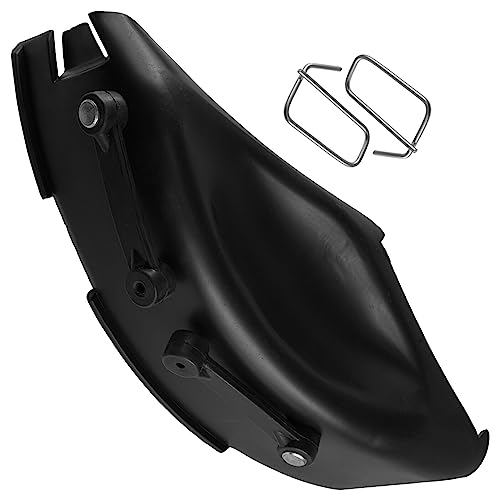I’ve always found that a simple layer of mulch can transform a garden. Not only does it enhance the look of your plants, but it also plays a crucial role in their health and growth.

From retaining moisture and regulating soil temperature to suppressing weeds, mulching offers a range of benefits that every gardener should harness. In this article, I’ll share the best practices for mulching to ensure your garden thrives all season long.
Whether you’re a seasoned gardener or just starting out, understanding the right mulching techniques can make all the difference. Let’s dive into how you can keep your plants healthy and your garden vibrant with effective mulching.
Benefits of Mulching
Using mulch in my garden provides several advantages that enhance my plants’ health and the overall appearance.
- Moisture Retention: Mulch reduces soil evaporation by up to 50%, ensuring my plants stay hydrated during dry spells.
- Temperature Regulation: By insulating the soil, mulch maintains stable root temperatures, protecting my plants from extreme heat and cold.
- Weed Suppression: A consistent layer of mulch limits weed growth by blocking light, decreasing competition for nutrients and water.
- Soil Improvement: Organic mulches decompose, adding essential nutrients and improving soil structure for better root development.
- Disease Prevention: Mulch acts as a barrier, preventing soil-borne pathogens from reaching my plant foliage and causing diseases.
Types of Mulch
Choosing the right mulch type enhances plant health and garden aesthetics. I explore both organic and inorganic options to help you make informed decisions.
Organic Mulch Options
Organic mulches improve soil structure and provide nutrients as they decompose. Common types include:
- Wood Chips: Break down slowly, ideal for tree beds and pathways.
- Straw: Excellent for vegetable gardens, offering good moisture retention.
- Grass Clippings: Readily available and rich in nitrogen, but require drying to prevent matting.
- Leaf Mold: Enhances soil fertility, perfect for under shrubs and perennials.
- Compost: Supplies essential nutrients, suitable for mixed garden beds.
Inorganic Mulch Options
- Plastic Sheeting: Effective for moisture control, often used in vegetable farming.
- Landscape Fabric: Allows air and water penetration, ideal for perennial beds.
- Gravel and Rocks: Provide a decorative look, suitable for xeriscaping and pathways.
- Rubber Mulch: Durable and low-maintenance, often used in playgrounds and high-traffic areas.
- Synthetic Groundcovers: Mimic natural materials, offering various colors and textures for garden design flexibility.
Best Mulching Practices
Implementing proper mulching techniques enhances plant health and garden aesthetics. Here are key practices to ensure effective mulching.
How to Apply Mulch Correctly
I start by preparing the soil, removing weeds and debris to create a clean surface. Then, I evenly spread the mulch around plants, keeping it a few inches away from stems and trunks to prevent rot. Using a rake, I ensure the mulch layer is uniform, covering the root zone without piling it up against plant bases. I water the mulch after application to help it settle and begin its moisture-retaining function.
Determining Mulch Depth
I maintain an optimal mulch depth of 2 to 4 inches. A 2-inch layer effectively conserves moisture and controls weeds, while a 4-inch layer offers additional insulation during temperature fluctuations. I measure the mulch thickness with a ruler to ensure consistency across the garden. Avoiding excessive depth prevents oxygen blockage to the soil and root systems, promoting healthy plant growth.
Mulching for Different Plant Health Needs
Selecting the right mulch depends on your plants’ specific health requirements. I categorize mulching strategies based on plant types to ensure optimal growth and vitality.
Vegetable Gardens
Vegetables thrive with mulches that retain moisture and suppress weeds. I use straw, grass clippings, or shredded leaves to maintain consistent soil moisture levels. These organic mulches decompose, enriching the soil with nutrients essential for vegetable growth. For plants like tomatoes and peppers, a 2-3 inch layer ensures adequate moisture retention while preventing fungal diseases by keeping mulch away from stems.
Flower Beds
Flowering plants benefit from mulches that enhance soil structure and provide a vibrant appearance. I prefer using wood chips or bark mulch in flower beds. These materials improve soil aeration and drainage, promoting healthy root systems. Maintaining a 3-inch layer around perennials and annuals helps regulate soil temperature and reduces weed competition, allowing flowers to flourish.
Shrubs and Trees
Shrubs and trees require mulches that offer long-term moisture retention and temperature regulation. I apply a 4-inch layer of shredded bark or compost around the base of shrubs and young trees. This depth provides insulation against extreme temperatures and minimizes water evaporation. Ensuring mulch is spaced a few inches from the trunk prevents moisture buildup that could lead to rot and pest issues.
Acid-Loving Plants
Plants like azaleas, blueberries, and rhododendrons prefer acidic soil conditions. I use pine needle mulch or shredded oak leaves to maintain the necessary soil acidity. A 2-3 inch layer of these mulches preserves the pH balance, supports root health, and gradually releases acidic compounds as they decompose. This approach ensures acid-loving plants receive the optimal environment for growth.
Succulents and Drought-Tolerant Plants
Succulents and drought-tolerant plants require mulches that reduce moisture retention to prevent root rot. I choose inorganic mulches such as gravel, stone, or crushed rock for these species. A 1-2 inch layer of gravel enhances drainage and reflects heat, creating a suitable habitat for succulents. This method conserves water by preventing excess moisture around the roots, promoting resilience during dry periods.
Container Plants
Container-grown plants need mulches that fit confined spaces and support frequent watering. I use small bark chips, decorative gravel, or compost in pots and containers. A 1-2 inch layer provides insulation and reduces evaporation, ensuring container plants maintain consistent moisture levels. Additionally, mulching in containers helps retain nutrients, supporting healthy plant growth in limited soil volumes.
Shade Gardens
Shade-loving plants benefit from mulches that improve soil fertility and retain moisture in lower light conditions. I apply leaf mold or composted compost around these plants to enhance soil quality and moisture retention. A 2-3 inch layer helps maintain a stable soil environment, supporting robust root systems and preventing weed growth in shaded areas.
By tailoring mulching practices to the specific health needs of different plants, I ensure each type receives the optimal conditions for growth and sustainability. This targeted approach promotes a thriving garden ecosystem, enhancing both plant health and overall garden aesthetics.
Common Mulching Mistakes to Avoid
- Mulching Too Close to Plant Stems
Placing mulch directly against stems restricts airflow, increasing the risk of rot and fungal diseases. Maintain a 2-3 inch gap around plant bases to ensure healthy growth.
« How to Use a Tiller in Your Garden: Essential Tips and Techniques How to Sharpen Garden Tools: Simple Steps for Long-Lasting Blades »
- Incorrect Mulch Depth
Applying mulch thinner than 2 inches fails to suppress weeds and retain moisture effectively. Conversely, exceeding 4 inches can suffocate roots and impede water penetration. Aim for a 2-4 inch layer.
- Using Inappropriate Mulch Types
Selecting unsuitable mulch disrupts soil pH and nutrient balance. For example, using pine needles for plants that prefer neutral soil can lead to nutrient deficiencies. Choose mulch types that match your plants’ specific needs.
- Neglecting Soil Preparation
Skipping the removal of weeds and debris before mulching allows unwanted plants to thrive beneath the mulch layer. Prepare the soil by eliminating existing weeds to enhance mulch effectiveness.
- Allowing Mulch to Pile Against Structures
Accumulating mulch against siding, bricks, or foundations can trap moisture, leading to structural damage and pest infestations. Keep mulch away from buildings to preserve their integrity.
- Over-Mulching in Containers
Applying excessive mulch in pots inhibits drainage and root respiration, causing root rot. Use thin mulch layers appropriate for container sizes to promote healthy plant development.
- Ignoring Seasonal Mulch Changes
Failing to adjust mulch types and depths with seasonal changes reduces its benefits. For instance, heavier mulches may be necessary in winter for insulation, while lighter layers work in summer for moisture retention.
- Reusing Old Mulch Without Inspection
Reusing mulch without checking for pests or diseases can introduce problems to your garden. Inspect and refresh mulch regularly to maintain a healthy growing environment.
By avoiding these common mistakes, I ensure that my mulching practices support vibrant and healthy plants throughout the growing season.
Conclusion
Watching my garden flourish using these mulching techniques has been truly rewarding. Choosing the right mulch and applying it properly has made a noticeable difference. I appreciate how mulching keeps my plants healthy and gives my garden a neat appearance. Whether you’re experienced or new to gardening having the right mulch can make your gardening easier and more enjoyable. Here’s to a vibrant and thriving garden!
















